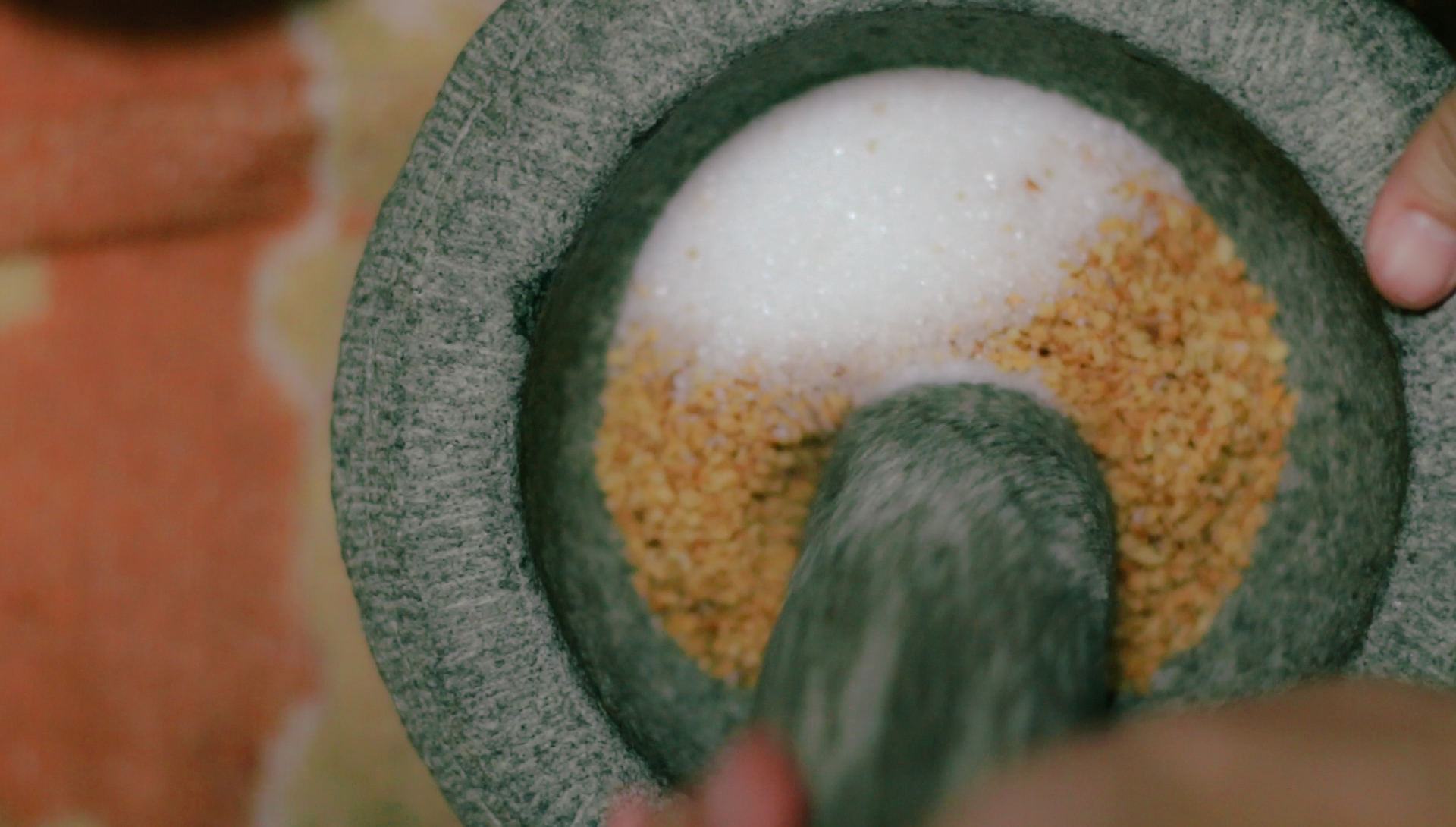18 April 2017
After going through multiple ebbs and flows, we had finally finished our last assignment for 4D!!! Before saying goodbye to 4D, I will document the final process of my group’s 4D exhibition.
Just a recap, my group’s exhibition is about prolonging the legacy of Kueh Tutu by creating the awareness of it to Singaporeans. In this exhibition, we engage our audiences five senses, to allow them to fully appreciate the art of Kueh Tutu.
Presentation Day
Station 1: Touch
This station shows the process of how Kueh Tutu flour is made. This video is projected on the wall, with a table in front, filled with the materials used to make the flour. This station’s objective is to engage the audience with the flour, to allow them to touch it or taste it, and experience the end product of what’s shown on screen.
Station 2: Smell
This station shows the process of how Kueh Tutu filling is made. This video is projected on the wall, and a table is placed in front of the projection. On the table, we have 3 jars. Each jar contains coconut filling, peanut filling and pandan leaves respectively. The objective is to allow the audience to appreciate the smell of each element.
Station 3: Sound
http://loopvideos.com/v_oMvpp-Z7Y
(Tutu Steaming Sound)
http://loopvideos.com/G9jqili3CFE
(Auntie serving the Kueh Tutu into the steamer sound)
This station engages the audience’s ears, to listen to the sound made when the Kueh Tutu is steamed. In the past, “Tutu” sound was made by the charcoal-heated steamers, that were used to cook the Kueh Tutu, which speaks for it’s name – Kueh Tutu. However, due to technology advancement, tenants no longer use the charcoal-heated steamers. Clara tried to remake the Tutu sound, as this sound could no longer be found. I think she really did a great job remaking the sound.
Station 4: Sight
This station concludes the different types of Kueh Tutu made by different races, to embrace each cultures’ confectionery. Najiha stitched different videos found online, putting Ruyi’s teaching to good use. It contains different races’ interpretation of Kueh Tutu/Putu Piring, allowing each race to indulge in the confectionery. I felt that it showed the Singapore spirit, where each race have their own unique taste for confectionery.
Station 5: Taste
The last station we brought the Kueh Tutus and Putu Pirings to life, allowing our classmates to savor it.
Documentation
Overall, I’ve learnt from my fellow group mates on treasuring the essence of Singapore in our project. I’m also thankful to them, as they were there when help is needed, especially Clara for all her enthusiasm for this exhibition. It is also through this exhibition that I’ve learnt the hard work behind making a small Kueh Tutu. It is only through passing down this knowledge, that we can prolong the legacy of Kueh Tutu.
I’m really grateful to Ruyi for teaching me throughout my first year of 4D. She really broaden my sight and thinking through her various break down of the movies and also looking in dept into various artists’ works. This concludes my first year of 4D.
Till next post! Ciao!

